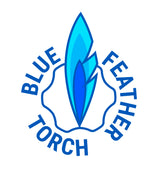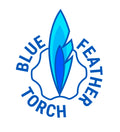How To Make Your First Gas Weld

Whether you’re an experienced welder, or someone brand new to welding, learning the basics of gas welding with an oxy-acetylene torch is a must. Having this knowledge in your back pocket allows you to weld in ways and places other options such as mig or tig don’t allow for. For those who are getting started started in gas welding, here are a few steps to get you your first gas weld once you have the necessary equipment and PPE:
1. Get the tanks set up:
Start by turning on your oxygen tank by opening it all the way. Once the oxygen is wide open, slowly set your pressure, we like to start at 5 pounds.
After the oxygen is all set, open up your acetylene tank a half turn. This is important because in case something you don’t want starts happening, you can quickly shut off the gas supply to the torch. Set the acetylene to 5 pounds as well, never exceed 15 pounds with acetylene.
Keeping the oxygen and acetylene at equal pressure is important for gas welding, because it prevents back flow to the hoses and keeps dangerous combustion from happening.
2. Prep you and your torch:
The next step is to make sure your PPE is being used and your torch is setup to start. For the PPE, make sure your eye protection is on and functioning properly, and that you have gloves that will withstand the heat from the torch while welding. Do not skip out on the PPE when gas welding.
To prep the torch, pick out which torch from Blue Feather you want to use (Pistol Grip or Straight Grip) and the tip size needed for the weld you plan to do. Once that is determined, practice how you plan to hold the torch while using it. Do this before you light the torch so that you are comfortable with how to grip and use the torch to run a puddle.
If you choose to use the Pistol Grip torch, there are a few ways we grip the torch. Typically it is one of two ways, either grip the entire vertical part of the torch in your hand and form a fist around it, or cup the vertical part of the torch between your thumb and pointer finger rest the remaining part of your hand on top and bottom of the horizontal part of the torch.
If you choose to use the Straight Grip torch, there are also a few ways we grip the torch. The first way is to grip it in your hand and form a fist around it with your thumb on top. The second way is to grip it more like a pencil. We find that there is a bit more control when gripping it like you would a pencil.
The important part of this is finding a way to grip the torch that works best for you and is also safe, keeping your body away from the flame that the torch produces.
3. Lighting the Torch:
Time to light the torch! We start by opening up the acetylene valve on the torch, and going a bit heavy on the gas. This helps to reduce the soot created by the flame. Next, get your striker and create a spark at the end of the tip to get your flame started. Once you have a flame, open up your oxygen valve to start getting the sharp blue flame.
After your torch is lit, check the pressure on your tanks. The pressure will likely drop for the gas and oxygen now that they are flowing to the flame. If this happens, adjust the pressure back to where they were before you lit your torch.
Once the pressures are good, adjust your valves to get the feather in your flame that you want. We’re looking to create a neutral flame for our weld. When you look at the flame, you’ll notice two cones of fire. A larger outer cone, and a shorter inner cone. To get a neutral flame, adjust your valves until the outer cone reduces to the same size as the inner cone.
4. Time to weld!
All the prep work is now out of the way and it’s time to weld! To start, put the flame from your torch directly above the material you are planning on welding to get a puddle to form. Once you see a puddle, change the angle of your flame to 45 degrees, and make a circular motion while slowly moving your flame across the material being welded. When you get to the end of the material, make sure to go slow and adjust your height or heat, this makes sure you don’t blow a hole in the metal you’re working with. This is the first step in learning to weld wih a gas torch!
Once you’re comfortable with creating a puddle and walking it across material, you’re ready to add welding rod to your weld. This is what is needed to weld two pieces of metal together. To start, heat up one end of your metal, and using the hand that you aren’t holding your torch with melt some of the filler rod to connect the two pieces. This is called a tack weld and it helps to keep the material from moving around on you while welding.
Next, move onto the other side of the metal, and create a puddle. Move the puddle along the material and add in filler rod to keep the puddle moving.
And there you have it, you now know how to weld with an oxy-acetylene welding torch! For more information and video examples of this, check out this video on our YouTube channel:
Make Your First Gas Torch Weld
If you’re interested in trying this out for yourself but don’t have a torch, Blue Feather Torch offers the most lightweight torches with the sharpest flame on the market. They allow you to take total control of the flame and weld with precision on your next project. Here’s a few of our favorites to check out:






Leave a comment